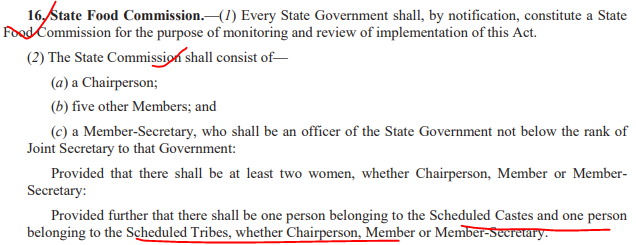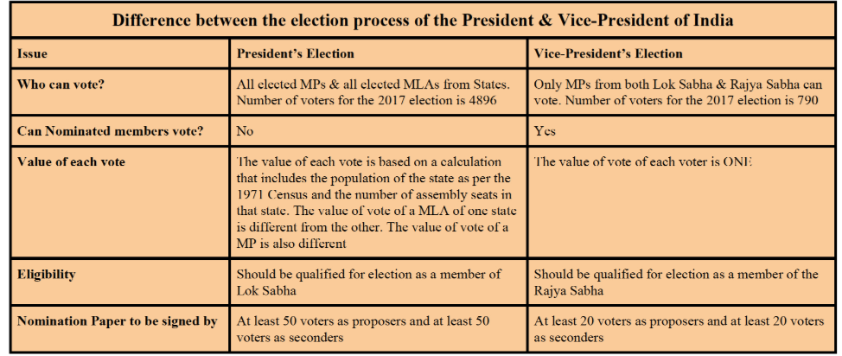Goaltide Daily Current Affairs 2023
Current Affair 1:
The concept of bye-election:
Section 151A of the Representation of the People Act, 1951 mandates the Election Commission to fill the casual vacancies in the Houses of Parliament and State Legislatures through bye elections within six months from the date of occurrence of the vacancy, provided that the remainder of the term of a member in relation to a vacancy is one year or more.
See one example of Legislative Assembly, what provision in RPA, 1951 says:

Current Affair 2:
About National Food Security Act
National Food Security Act, 2013 was notified on 10th September, 2013 with the objective to provide for food and nutritional security in human life cycle approach, by ensuring access to adequate quantity of quality food at affordable prices to people to live a life with dignity.

1. Priority households are entitled to 5 kgs of food grains per person per month, and Antyodaya households to 35 kgs per household per month. The combined coverage of Priority and Antyodaya households (called “eligible households”) shall extend “up to 75% of the rural population and up to 50% of the urban population”.



2. For children in the age group of 6 months to 6 years, the Bill guarantees an age-appropriate meal, free of charge, through the local anganwadi. For children aged 6-14 years, one free mid-day meal shall be provided every day (except on school holidays) in all schools run by local bodies, government and government aided schools, up to Class VIII. For children below six months, “exclusive breastfeeding shall be promoted”.

3. Every pregnant and lactating mother is entitled to a free meal at the local anganwadi (during pregnancy and six months after childbirth) as well as maternity benefits of Rs 6,000, in instalments.

4. The Central Government is to determine the state-wise coverage of the PDS, in terms of proportion of the rural/urban population. Then numbers of eligible persons will be calculated from Census population figures.

5. The identification of eligible households is left to state governments, subject to the scheme’s guidelines for Antyodaya, and subject to guidelines to be “specified” by the state government for Priority households.

6. The Act provides for the creation of State Food Commissions. Each Commission shall consist of a chairperson, five other members and a member-secretary (including at least two women and one member each from Scheduled Castes and Scheduled Tribes).

The main function of the State Commission is to monitor and evaluate the implementation of the act, give advice to the states governments and their agencies, and inquire into violations of entitlements (either suo motu or on receipt of a complaint, and with “all the powers of a civil court while trying a suit under the Code of Civil Procedure 1908”). State Commissions also have to hear appeals against orders of the District Grievance Redressal Officer and prepare annual reports to be laid before the state legislature.
7. The Centre should provide all possible resource and funds to prevent scarcity.

8. Obligation of Local Authorities:

9. Food security to people living in hilly areas:

Current Affair 3:
Advantages of Na-ion batteries
Basically here, you have read about advantages of Na-ion batteries.
Scientists have used nano-materials to develop Na-ion-based batteries and supercapacitors, which can be rapidly charged and have integrated them in e-cycles. The low-cost Na-ion-based technologies would be cheap and are expected to reduce the cost of the e-cycles significantly.
Sodium-ion (Na-ion) batteries have triggered academic and commercial interest as a possible complementary technology to lithium-ion batteries because of the high natural abundance of sodium and the consequent low costs of Na-ion batteries.
These sodium materials are cheaper than Li-based materials, high performing, and can be scaled up to industrial-level production.
The Na-ion cell can also be totally discharged to zero volt, similar to a capacitor, making it a safer option in comparison to many other storage technologies.
Na-ion batteries can be charged rapidly.
With further development, the price of these vehicles can be brought down to the range of Rs. 10-15 K, making them nearly 25% cheaper than Li-ion storage technologies-based e-cycles.
As disposal strategies of Na-ion-based batteries would be simpler, it can also help in addressing the climate mitigation issue.
Current Affair 4:
Vice-President’s Election
Like the President of India, the Vice-President is also not directly elected by people.
He is elected directly by the representatives of people, i.e., Members of Parliament (MPs) from both the Lok Sabha & the Rajya Sabha. Even nominated MPs from both the houses are eligible to vote in this election.

Eligibility to contest the election of Vice-President of India
The following are the mandatory requirements for anyone to contest the election for the Vice-President of India.

Are there any other conditions to be fulfilled to contest?
Apart from the above conditions, the nomination paper of a candidate has to be signed by at least twenty (20) eligible voters as proposers and at least twenty (20) eligible voters as seconders. Here the voters are the MPs of the both the houses and not citizens. A voter cannot propose or second more than one candidate.
What is the value of vote of each MP?
Unlike in the President of India’s election, the value of the vote of each MP in the Vice-President’s election is ONE. It has to be noted that nominated members of both the Lok Sabha & the Rajya Sabha are also eligible to vote in the Vice-President’s election. The total number of voters in the Vice-Presidential election is 790. The number of voters from the Lok Sabha is 545 (543 elected & 2 nominated) while the number of voters from the Rajya Sabha is 245 (233 elected & 12 nominated).
How is this election different from the Presidential Election?

The Election Process
The election happens through a ballot paper, that contains names of the contesting candidate. The ballot paper does not contain any election symbol. There will be two columns in the ballot paper, Column 1 of the ballot paper contains the heading “Name of Candidate”, and Column 2 contains the heading “Mark order of preference”.
Each voter can mark as many preferences, as the number of candidates contesting the election. These preferences for the candidates are to be marked by the voter, by marking the figures 1,2,3, 4, 5 and so on, against the names of the candidates, in the order of preference.
Counting Process
The winning candidate has to secure the required quota of votes to be declared elected, i.e., 50% of valid votes polled +1. For e.g., if the total number of valid votes polled is 790, then the quota required for getting elected is

What about the Anti – Defection Law & Whips?
The provisions of the anti-defection law are not applicable to the Vice-Presidential election since the voting is through a secret ballot. The voters can vote according to their conscience and are not bound by any party whips.
<< Previous Next >>


